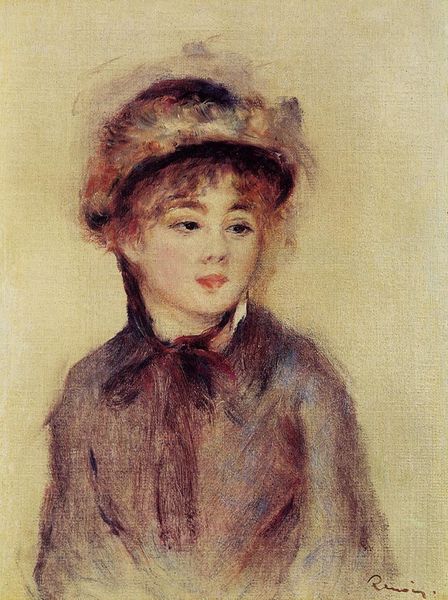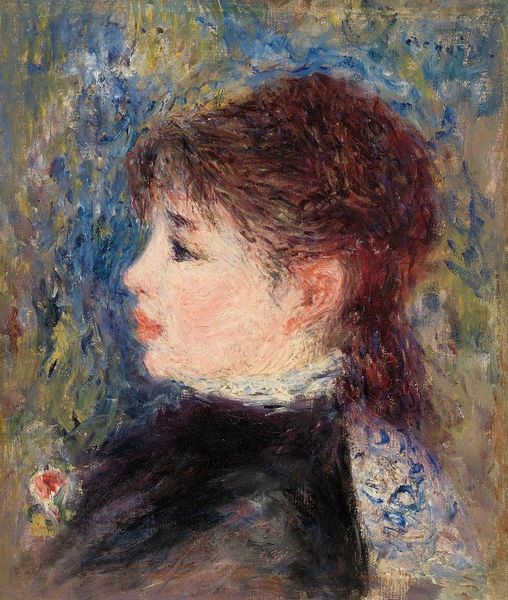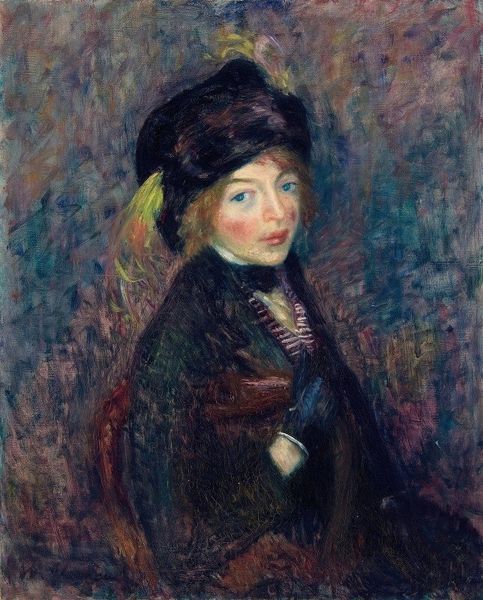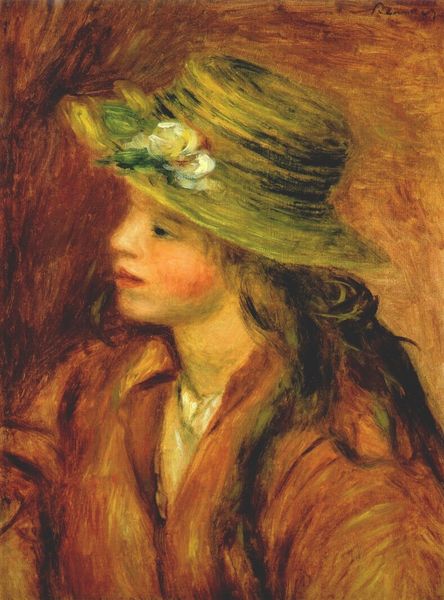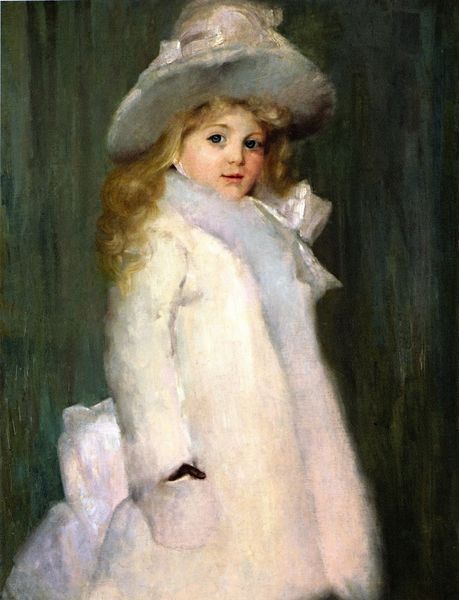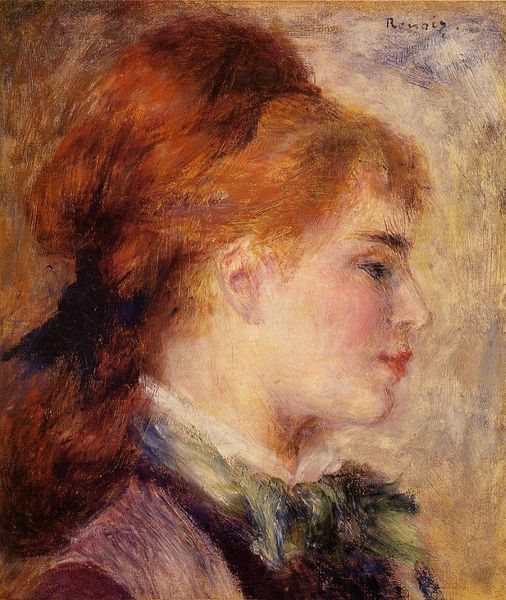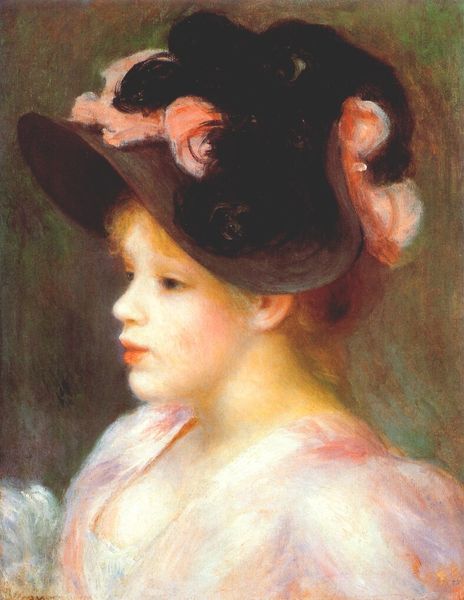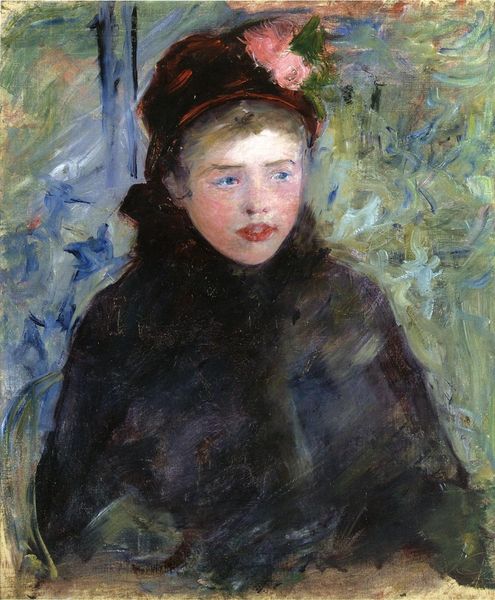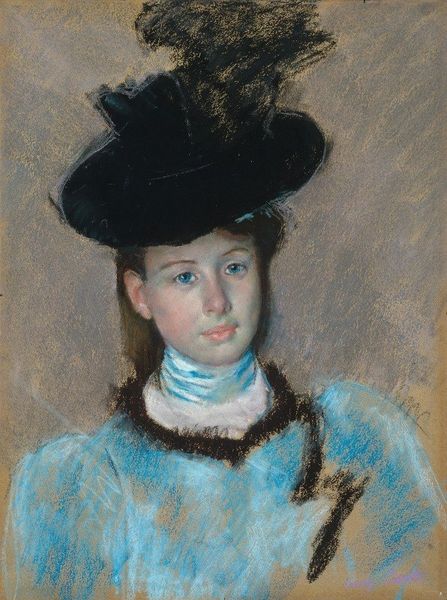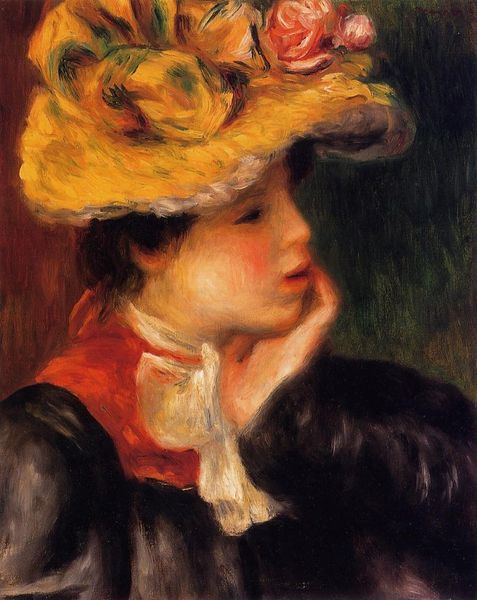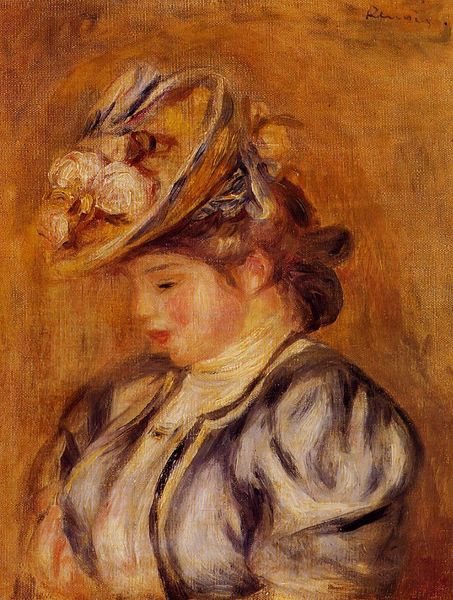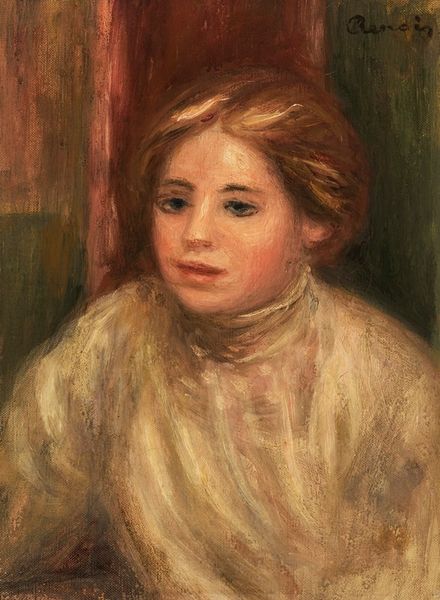
painting, oil-paint
#
portrait
#
painting
#
impressionism
#
oil-paint
#
oil painting
#
lady
#
realism
Dimensions: 38 x 46.5 cm
Copyright: Public domain
Curator: This is Pierre-Auguste Renoir's "Portrait of Margot (Portrait of a Model)", painted in 1877, currently residing at the Musée d'Orsay. Editor: My initial reaction is one of subdued elegance. The colors are soft, almost muted, and the brushstrokes give the painting a feeling of gentle movement, a life held delicately within the frame. Curator: Renoir was deeply interested in portraying the evolving roles of women in late 19th-century Parisian society. Consider the model’s attire – the fashionable hat, the neatly tied scarf – indicative of a bourgeois respectability. Yet there’s a certain introspective quality, a gaze directed elsewhere, that hints at inner thoughts and perhaps societal constraints placed upon women of her time. Editor: Indeed. Structurally, Renoir uses the interplay of light and shadow to define her form. The luminous skin contrasts with the darker tones of her clothing and background. I would also emphasize the way he captures texture - observe the delicate rendering of her hair. This piece showcases the artistic exploration that he began during the late 1860s where portrait work, and an intimate focus upon the single figure, took priority. Curator: And while we admire its formal qualities, let’s also remember the position of women models. Often anonymous, like Margot, these women’s livelihoods depended on their image. There's an interesting dynamic in who is seen, and who has agency. How might Margot have felt about being depicted this way? Editor: I agree, the formal choices may reveal Renoir's skill, and artistic expression, but this does not take away the social context that framed the work itself. Renoir’s aesthetic decisions— the blurring of edges, the soft coloration, creates an emotional landscape that can be explored through the semiotics of form itself. It captures a fleeting moment. Curator: Thinking about the semiotics in relation to this context encourages us to deconstruct the language of the male gaze as it defines 19th-century French portraiture, interrogating it through a more critical, contemporary lens. Editor: Perhaps it comes back to texture; not only as brush strokes, but of her hair, skin, clothing. This haptic quality is a point that touches across the historical position of portraiture with an element that has always captivated artistic interpretations and visions. It all resonates and leaves its mark upon us now. Curator: Indeed. Thinking about "Portrait of Margot" through an intersectional framework allows us to connect past and present discourses about representation, labor, and visibility. Editor: And looking through it from the formal values of color, composition, allows for us to reflect and study on how representation happens in art and history.
Comments
No comments
Be the first to comment and join the conversation on the ultimate creative platform.
